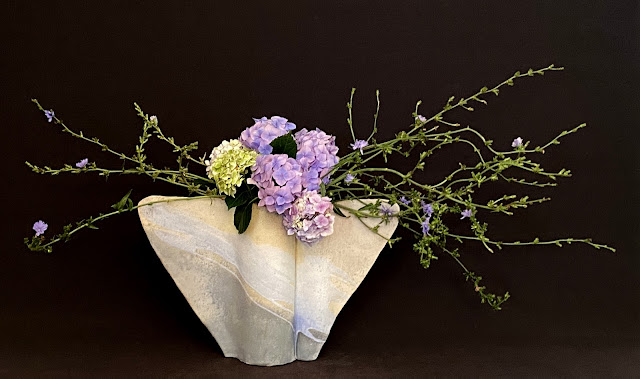Hello all,
I have a number of bromeliads growing at the bottom of the garden, basically, thriving on neglect. It was when I was watering my dogwoods down there that I noticed two flowers on the Queen's tears bromeliad (Billbergia nutans). In such situations my first instinct is to cut the flowers and worry about what to do with them later.
For the above arrangement, I used the lower part of this, unidentified palm frond where the leves grow at a much sharper angle. I felt it worked well with the modern, stainless steel container. The softness of the flower contrasted well with the sharpness of the palm frond and container.
But, as I mentioned, I had two flowers. For the next piece I used a large, rectangular, glass container. I cut the middle section of the palm frond and inserted it diagonally in the vase. The bromeliad flower has its stem in the vase but hangs at the back of the container, outside of it.
Initially, I had used the flower as it was, without trimming....
I was not happy with that because, even though the flower was outside the container, it, nevertheless, filled in the space that was created by putting the palm frond to the left. So I trimmed the flower and was better pleased.I gave the arrangement, below, to someone as a 'thank you' for some work he did for us. He was absolutely delighted with it but thought it was a potted plant that would keep on growing. Sadly, I had to disabuse him of the notion. Those of you who have seen the street sculpture 'Love Flower' will notice the resemblance with the agapanthus. I used umbrella grass (Cyperus alternifolius) stems and a hydrangea to cover the florists' foam.
Mary's curriculum lesson was 'In a suiban without a kenzan'. She used Siberian dogwood and snapdragons in a ceramic suiban, keeping the stems of both trimmed neatly, so that their lines are emphasised and a canopy is created.
Bye for now,
Emily






































